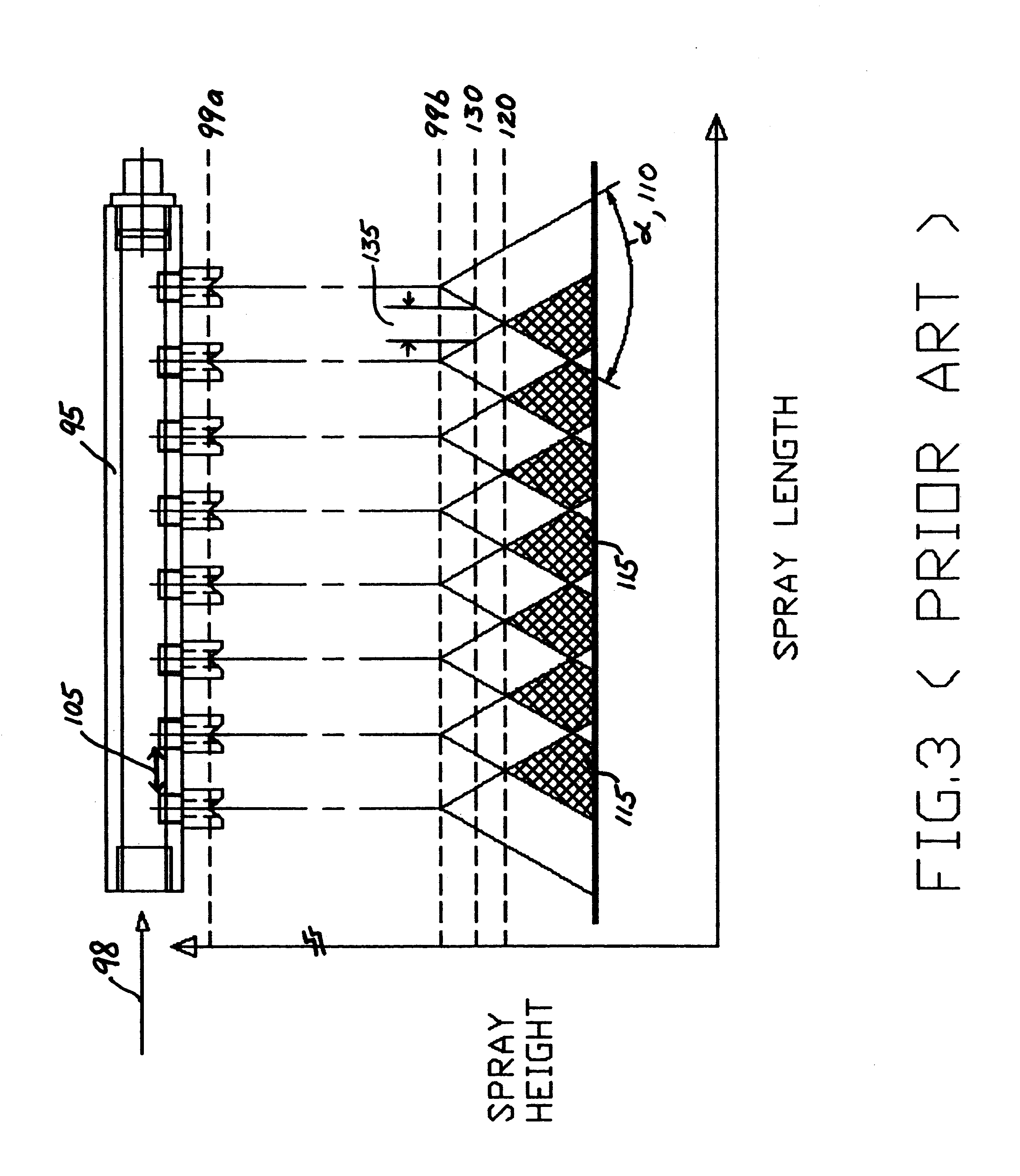Method and apparatus for washing and drying semi-conductor devices
a technology of semi-conductor devices and washing machines, applied in lighting and heating apparatus, liquid processing with progressive mechanical movement, combustion process, etc., can solve the problems of ineffective cleaning of such closely packed devices, limited cleaning parameters which are much needed, and inability to achieve close pitching when attached in a straight line. , to achieve the effect of low operating cost and high and consistent cleaning efficiency
- Summary
- Abstract
- Description
- Claims
- Application Information
AI Technical Summary
Benefits of technology
Problems solved by technology
Method used
Image
Examples
Embodiment Construction
An apparatus for achieving state-of-the art cleaning is described. The preferred embodiment comprises a conveyor disposed within a housing or chassis, and a set of spray tools. A pump system delivers pressurized fluid from tanks to strainer, valves, filters and / or ion exchange resins to finally exit through spray tunnels or wands onto the devices to be cleaned. The spray tools can be grouped into one or more sections, such as a wash, rinse, and drying sections.
The prewash or wetting spray wand in the wash section preferably function with chemicals or water as the wash fluid or medium, followed by a series of wash sprays, and ends with an isolation process, which prevents the wash medium from crossing over to the next rinsing stage. The pre-rinse spray wand removes the chemical on the devices from the wash section, followed by a series of spray wands which washes completely the remaining in residue from the device. Another isolation spray wand which uses for example nitrogen gas, is ...
PUM
| Property | Measurement | Unit |
|---|---|---|
| Diameter | aaaaa | aaaaa |
| Diameter | aaaaa | aaaaa |
| Distance | aaaaa | aaaaa |
Abstract
Description
Claims
Application Information
 Login to View More
Login to View More - R&D
- Intellectual Property
- Life Sciences
- Materials
- Tech Scout
- Unparalleled Data Quality
- Higher Quality Content
- 60% Fewer Hallucinations
Browse by: Latest US Patents, China's latest patents, Technical Efficacy Thesaurus, Application Domain, Technology Topic, Popular Technical Reports.
© 2025 PatSnap. All rights reserved.Legal|Privacy policy|Modern Slavery Act Transparency Statement|Sitemap|About US| Contact US: help@patsnap.com



